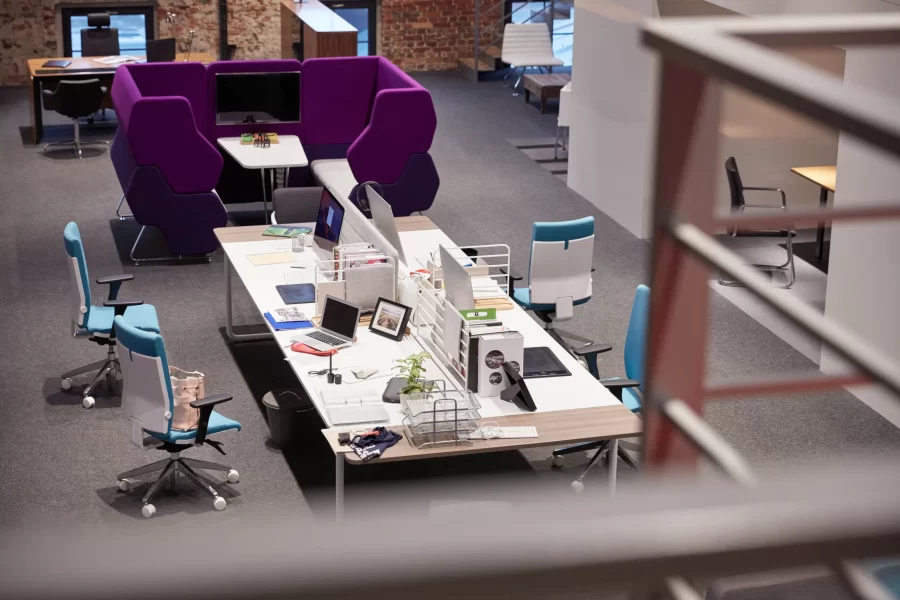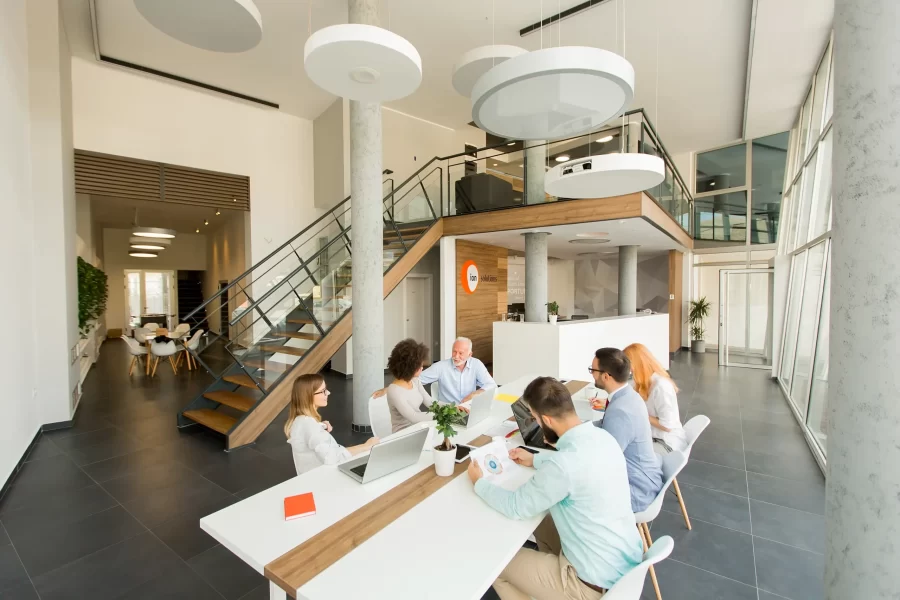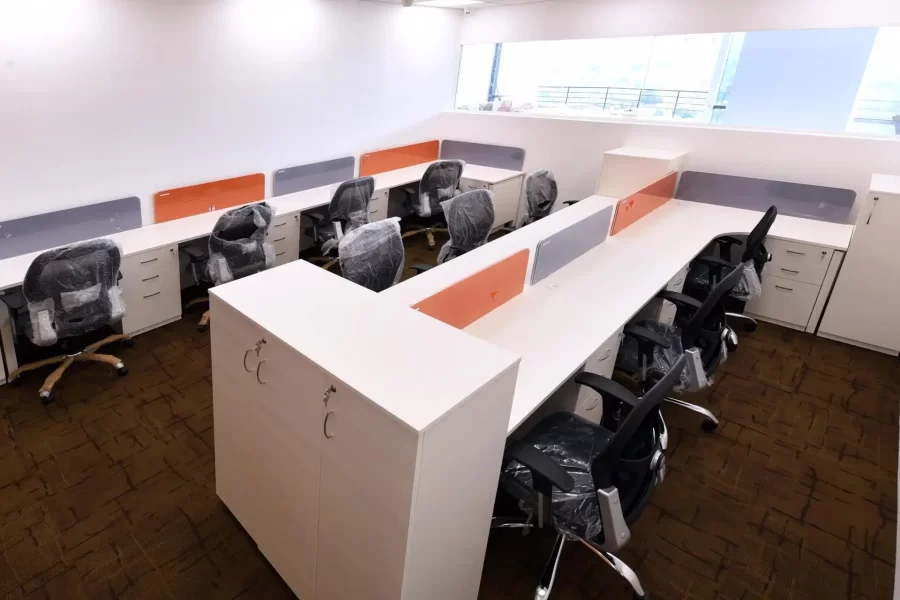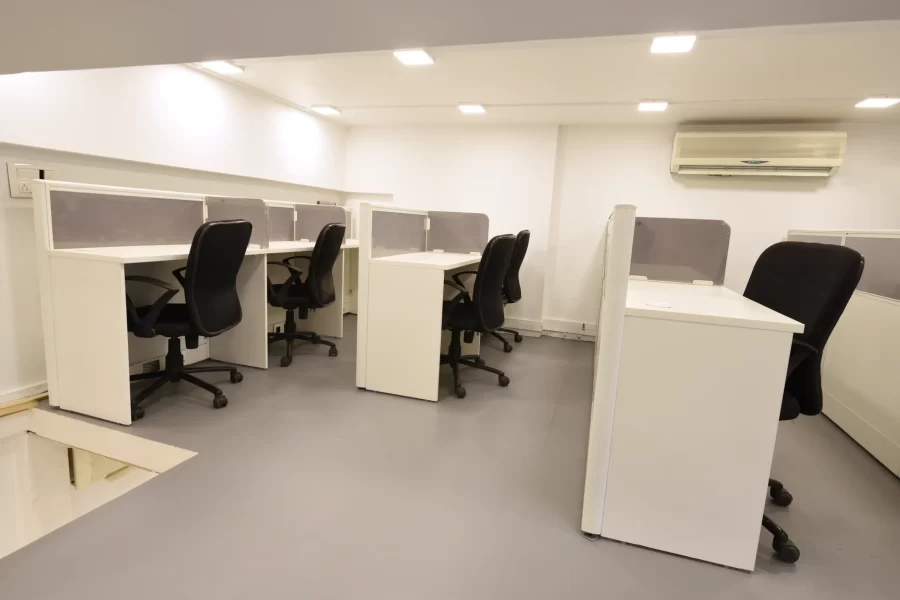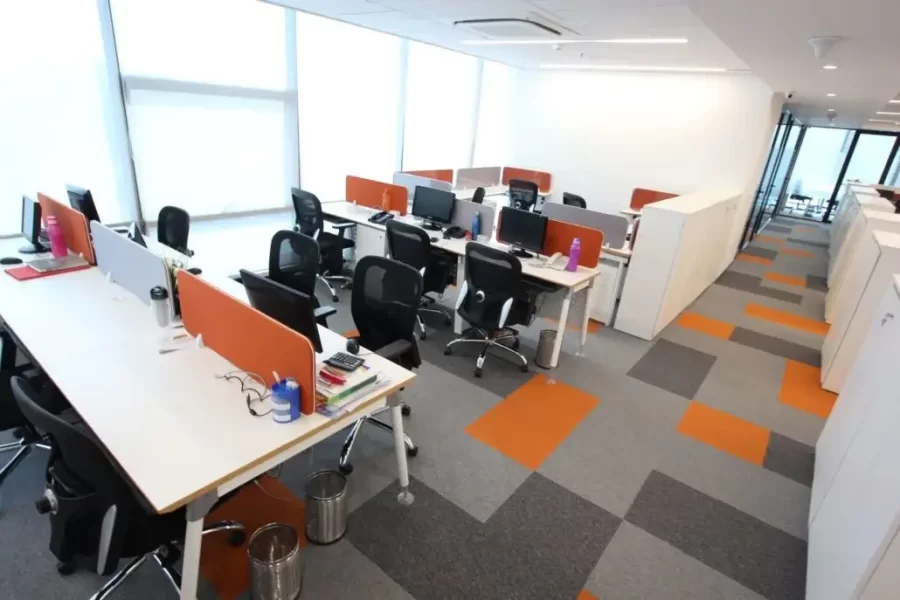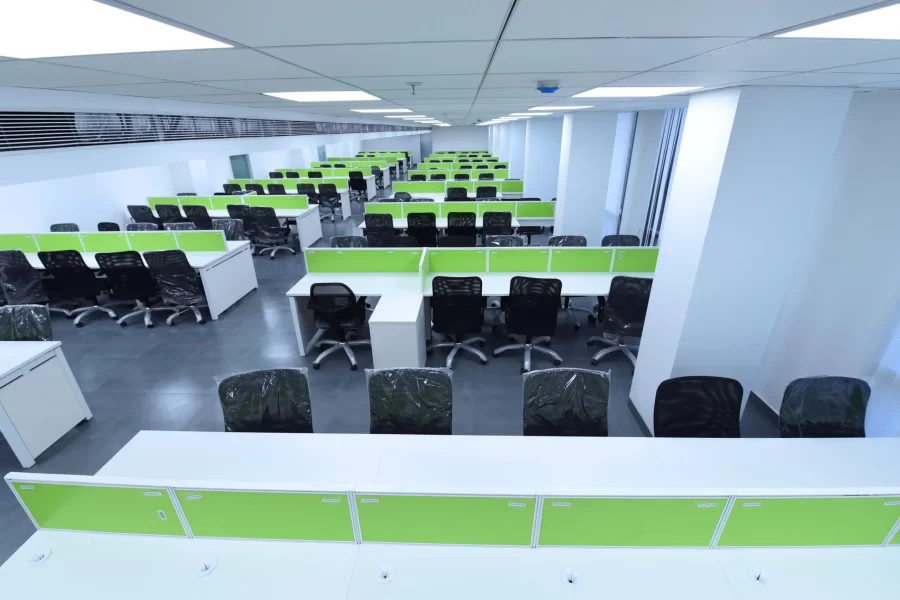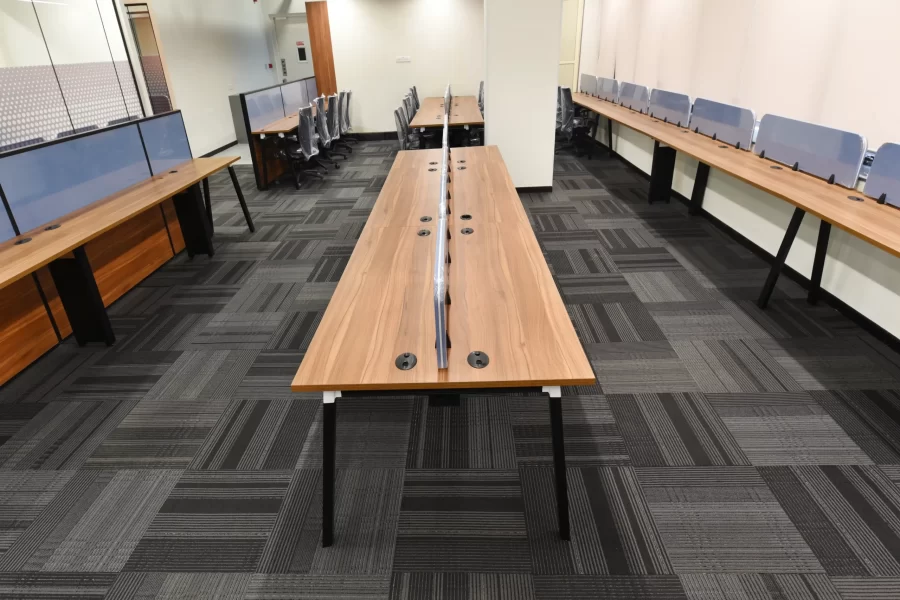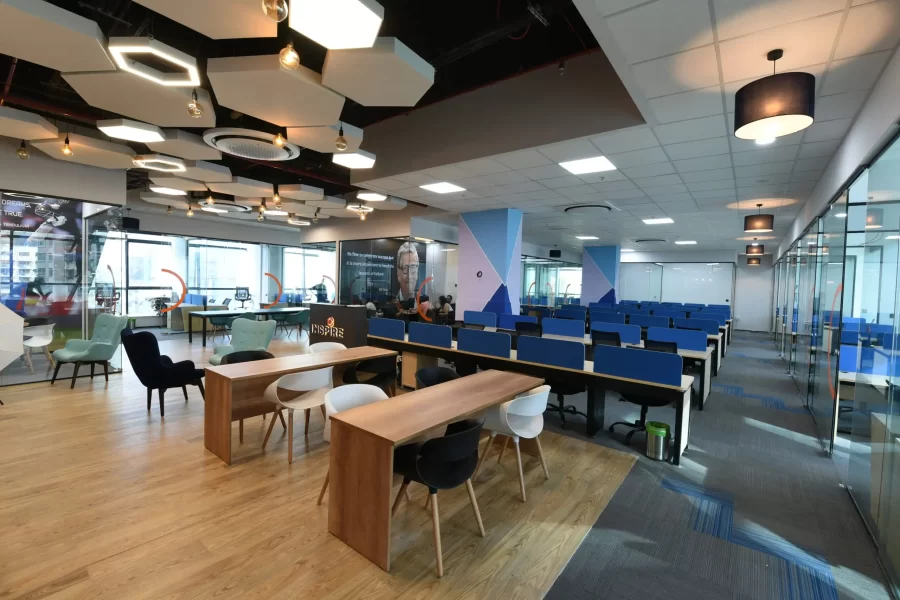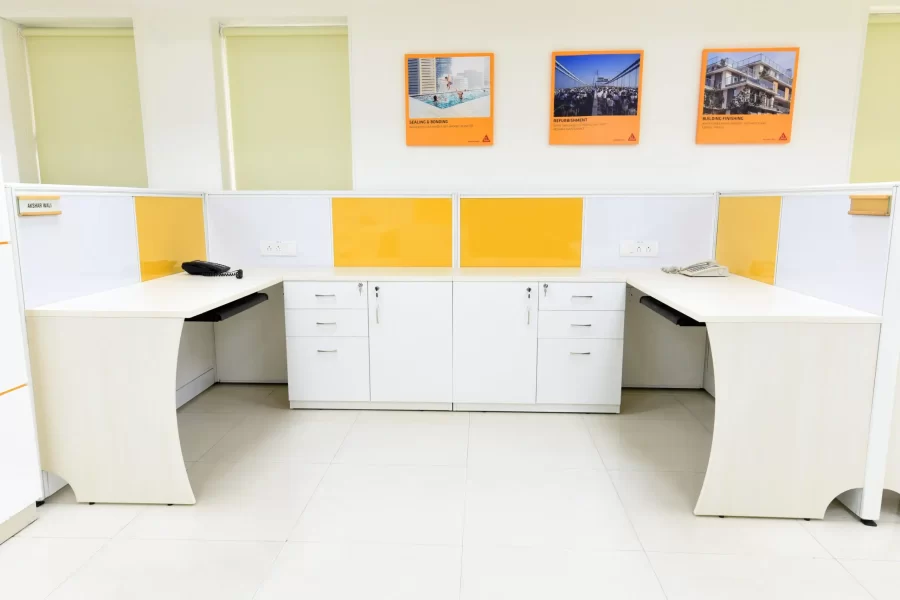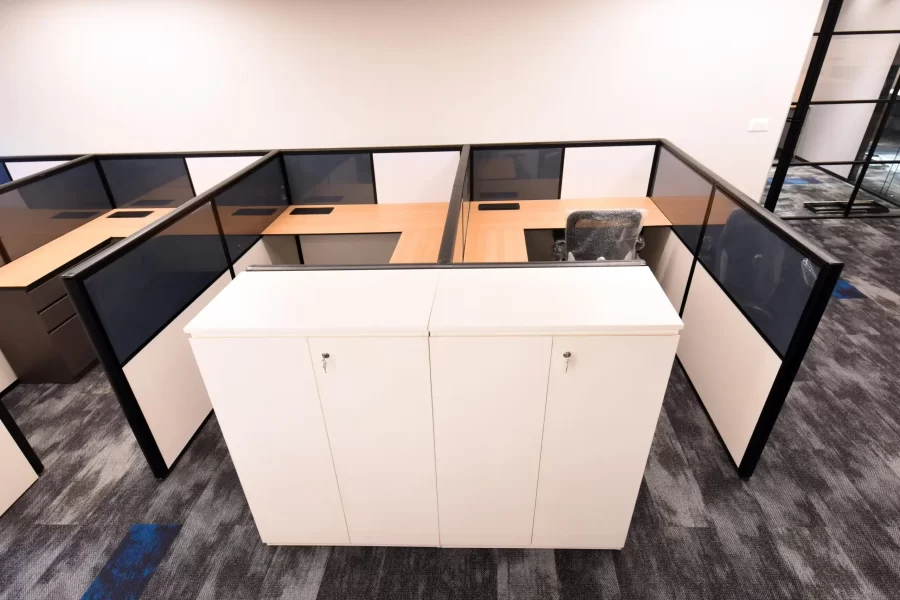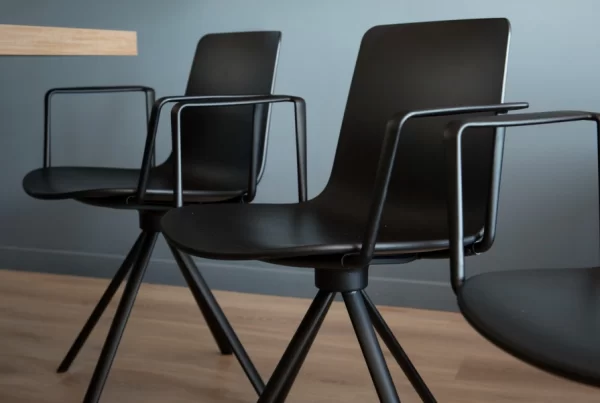In the modern world, choosing an ideal workspace is essential for the success of any organization. There are different types of office layouts available for different work environments, so workspaces no longer mean dull and boring settings. Today, businesses invest in creative office spaces, which improve teamwork, efficiency, and the well-being of employees.
As there are various types of workspace options available, it is important to choose which one will fit your needs, company budget, and culture. In this article, we will take a look at current office design trends and how to select the best office space for your business.
Types of Office: Popular Choices for Modern Workplaces
Office is the space to get work done and give life to the company’s vision. It is where people can focus on their assigned tasks and also work in collaboration with others.
Traditional vs. modern office designs; each has a different approach to work culture and employee needs. Office spaces can be categorized into different types, including traditional offices, co-working spaces, hybrid models, and fully remote setups. Each design has its own advantages and disadvantages. We’ve put together a brief overview of different types of offices available today
1. Traditional Office
Suitable For: Traditional offices are good for large companies, law firms, financial institutions, and businesses that require privacy.
Description: A traditional office is a workspace that a company leases or owns. It typically includes private offices, meeting rooms, and a reception area. These offices offer more control and privacy for businesses.
Pros:
- Offers privacy for confidential work and employees.
- Well-defined spaces for different departments or teams.
- Better privacy and security.
- Ideal for companies with a fixed location and established business processes.
Cons:
- Expensive set up to lease or buy property.
- Less flexible in terms of design and layout.
- Long-term lease commitments.
- Responsibilities for managing maintenance and utilities.
2. Open Office
Suitable For: Open spaces are ideal for startups, tech companies, creative agencies, and companies with focus on teamwork and collaboration.
Description: An open office space usually has a large, open space with minimal partitions. This office space creates an environment that encourages communication and collaboration among employees.
Pros:
- Promotes teamwork and easy communication.
- Flexible and can adapt to changing needs.
- More cost-effective in terms of space usage.
Cons:
- Can be noisy and distracting which reduces productivity.
- Lack of privacy can be uncomfortable for some employees.
- No personal space may result in decreased employee satisfaction.
3. Virtual Office
Suitable For: Virtual offices are best for small businesses, remote teams, freelancers, or such businesses that do not require a physical office.
Description: A virtual office has a business address, phone services, and a professional image without a physical workspace. Employees can work remotely, and the company uses the virtual address for email and meetings.
Pros:
- Save cost and eliminate the need for physical office space.
- Flexible work setup allows employees to work from anywhere.
- Offers a professional business address and communication services.
Cons:
- No in-person interaction may affect team bonding.
- Can lead to lower productivity for some employees.
- Limited access to office facilities and meeting rooms.
4. Co-working Space
Suitable For: Co-working Spaces are best for small businesses, remote workers, freelancers, and startups that require flexibility.
Description: A co-working space is a communal office space where individuals from different companies work together. Here you get access to shared facilities like high-speed internet, meeting rooms, and lounge areas and it helps the company to reduce costs.
Pros:
- Reduces overhead expenses when cost is shared.
- Offers networking opportunities.
- Get access to modern office amenities.
Cons:
- Can cause conflict over shared resources.
- Privacy is hampered.
- Dependent on the co-working provider for services and maintenance.
5. Shared Office
Suitable For: Shared spaces are good for Startups, small businesses, or teams that need a blend of private space and shared resources.
Description: A shared office space is similar to a co-working space but usually shared by a few businesses. Here companies share resources like meeting rooms, reception areas, and common facilities, which helps to reduce the overhead costs.
Pros:
- Cost sharing cuts expenses.
- Get new opportunities for collaboration and networking.
- Access to shared amenities (Common facilities, meeting rooms, printers, etc.).
Cons:
- Potential conflicts over shared resources.
- Less control over the office environment.
- Privacy concerns in common areas.
6. Private Office
Suitable For: Private offices are best for businesses that need a noiseless, private workspace, such as law firms, consultants, or businesses handling confidential information.
Description: Such office spaces are dedicated workspaces within a larger office building or co-working space. It offers exclusivity and privacy, and thus ideal for companies looking for confidential environments.
Pros:
- More privacy and control over the office space.
- Professional and exclusive setting.
- Better security for confidential work.
Cons:
- More expensive than shared spaces.
- Less opportunity for networking or collaboration with other businesses.
- Often comes with longer lease commitments.
7. Managed Office
Suitable For: Managed offices are good for businesses that require a fully equipped office space with minimal setup time and offers flexibility.
Description: This type of office is fully serviced office space provided by a third-party operator. With rental agreement, it provides utilities, maintenance, and other services.
Pros:
- Ready to use with minimal setup time.
- Flexible lease terms.
- Access to professional services and amenities like admin support.
Cons:
- Expensive compared to traditional office leases.
- Limited customization options for office layout or design.
- Dependent on the service provider for maintenance and support.
How to Choose the Right Type of Office for Your Business
Some of the following tips will help you to select the right office type.
- Access Business Needs: Start assessing your business needs. What is your team size, how the work culture, and what are the growth plans. This will help understand which office type is best for your operations.
- Consider Budget and Resources: Next thing to consider is your budget and resources. A realistic budget is important, as office spaces have different price points and long-term expenses. Consider rent, utilities, and maintenance costs in budget.
- Growth and Flexibility: Flexible office spaces, like co-working or managed offices, allow you to scale your operations without requiring relocating or redesigning your space.
- Employee preferences and work styles: Evaluate if your team values collaboration then an open office or co-working space will be best. If they require privacy, a traditional or private office will be more suitable. If the office layout is according to the team’s requirements it will enhance productivity and satisfaction.
Latest Trends in Office Spaces
- Flexible and Hybrid Workspaces: There is a huge demand for flexible office spaces as companies are implementing remote and in-office working models where employees can work from different locations.
- Tech-Enhanced Offices: Offices with smart technology integration like automated lighting, temperature control, and video conferencing tools helps to improve productivity and comfort of employees.
- Sustainable and Eco-Friendly Offices: Modern office spaces having eco-friendly materials, energy-efficient systems, and green certifications helps to reduce environmental impact and energy consumption.
- Employee Wellness-Centric Designs: Employee wellness in office space designs with silent zones, gyms, and relaxation areas helps in promoting their mental and physical health.
Furnish Your Chosen Office Type with Vlite’s Office Furniture Solutions
Selecting the right office type is a key decision for any business. An office setup nurtures a positive work environment in which employees can collaborate easily and stay focused. A space that fits your team’s working style can improve collaboration, reduce stress, and increase job satisfaction.
To elevate the functionality and aesthetics of your chosen office type, Vlite Furnitech offers a wide range of furniture solutions. Whether you choose minimalist designs or luxury furnishings, our office furniture enhances any workspace. We provide customizable solutions that fit your office style.
Check out our office furniture design guide and modular office furniture, to create an office that works for both your team and your business. Consult with Vlite Furnitech today and contact us for a personalized consultation.
FAQs
What are the main types of office?
The main types of office spaces are traditional offices, open offices, co-working spaces, hybrid offices, and virtual offices. Each office space has a different layout, flexibility, different work styles and business needs. Selecting the right office type depends on budget and other requirements.
Is co-working space a type of office?
Yes, a co-working space is a type of office. It is a shared workspace where people from different companies work together. Co-working spaces offer flexibility and shared resources, and are ideal for freelancers and small businesses.
How do different types of office spaces affect employee morale and productivity?
Different office spaces can affect how employees feel and work. Open-plan offices help with teamwork and collaboration, while private offices help to focus on work. Flexible spaces like co-working or hybrid offices give employees more choice, which can improve their mood and productivity.
What office type is best for large teams and scalability?
Open offices or hybrid offices are the best options for large teams and scalability. They provide flexibility, allow easy expansion, and can accommodate a growing workforce without any need for major redesigns.
What are the best types of offices for corporate settings?
Traditional or private offices are usually the best choice for corporate settings. They offer privacy, structure, and a professional environment, which are important for business operations and keep confidentiality.



